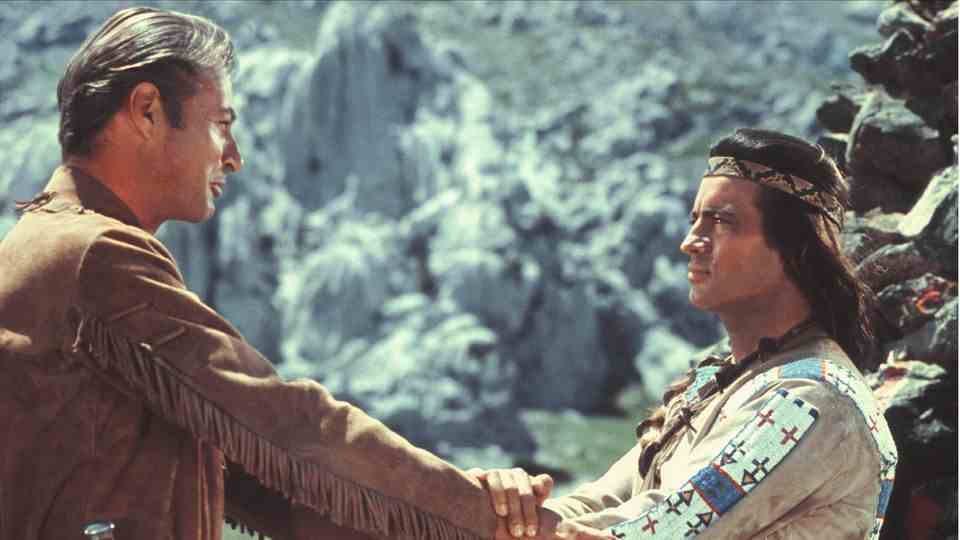opinion
“The Young Chief Winnetou” is a cute children’s film – with a frightening, racist scene
Outrage about Winnetou, Winnetou books and his ban on sales: a complex that many in Germany were outraged about
© -/Leonine / DPA
It is the corpus delicti: the movie “The Young Chief Winnetou”. A heated debate about racism and cultural appropriation erupted over the companion book. As sweet as the strip is, it is also worrying.
Two little boys from different cultures and traditions meet. At first they hate each other, endure one or two adventures together and end up becoming blood brothers. What sounds like a sweet children’s film with a nice message is largely true. Were it not for the harping on of tribal clichés.
And a racist scene.
The young chief’s son Winnetou and his new ally, Tom Silver, set out to find buffalo that could ensure the survival of the tribe. While the two boys ride through the steppe one behind the other, the blond boy sweats a lot. The hair sticks to his head. He turns to Winnetou, who doesn’t seem impressed by the heat, and asks him, “Do Indians actually sweat?”
Apart from the fact that this question cannot be surpassed in terms of stupidity from a scientific point of view – what is it supposed to achieve? Branding tribals as aliens who don’t know sweat? What image does this convey to a young audience?
And that is the crux of the matter: What we adults show our children and young people, what we read to them and what we live by example will shape them. And then many of them will pass it on to their offspring. A vicious circle. For this reason, it is important that cultural workers are aware of their responsibility, especially those who focus on children’s films and literature. Unfortunately, the makers of “The Young Chief Winnetou” didn’t do it well enough.
“The young chief Winnetou” – one cliché follows the next
In addition to the scene described, the film is peppered with clichés of indigenous traditions. The tribesmen with their painted faces and colorful costumes greet with “Houwgh”, a wise elderly woman can see into the future and Winnetou can summon horses by knocking stones.
The makers missed an opportunity to at least show the reality and future of the indigenous people. Nagi-Nita, a tribesman had colluded with the bad guys to get weapons. This is the only way they, the indigenous people, could hold their own against the advancing settlers. The young man (played by Tim Oliver Schultz) hits exactly the sore spot: White settlers are wiping out peoples on the American continents, also through the use of force. These historical facts could have been incorporated in the credits or in the form of an explanatory board directly after the fictional plot. And must.
To be clear: Winnetou, young or old, should not be banished forever. On the contrary, take this heroic epic to inform yourselves about the history of the indigenous tribes and let them flow into fictional material. Books can be supplemented with an extra chapter on the true story of the characters.
The young cinemagoers certainly had fun and one or the other was curious about the stories of indigenous tribes. It’s up to us adults to bring them closer to the world outside of fiction. Suitable for children, but honest and informative.



